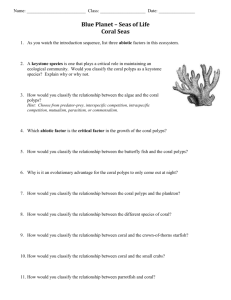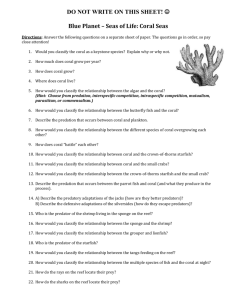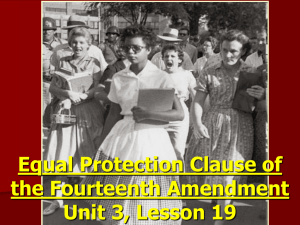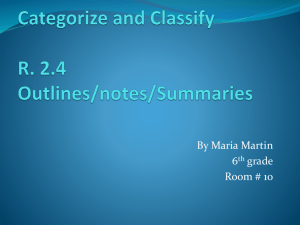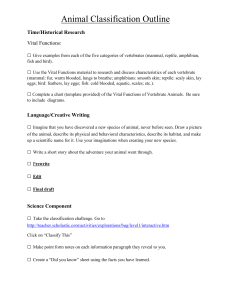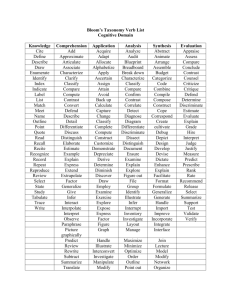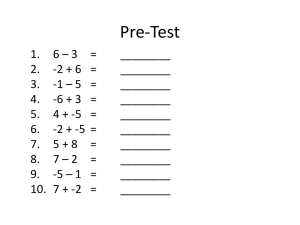Coral Seas DVD worksheet
advertisement
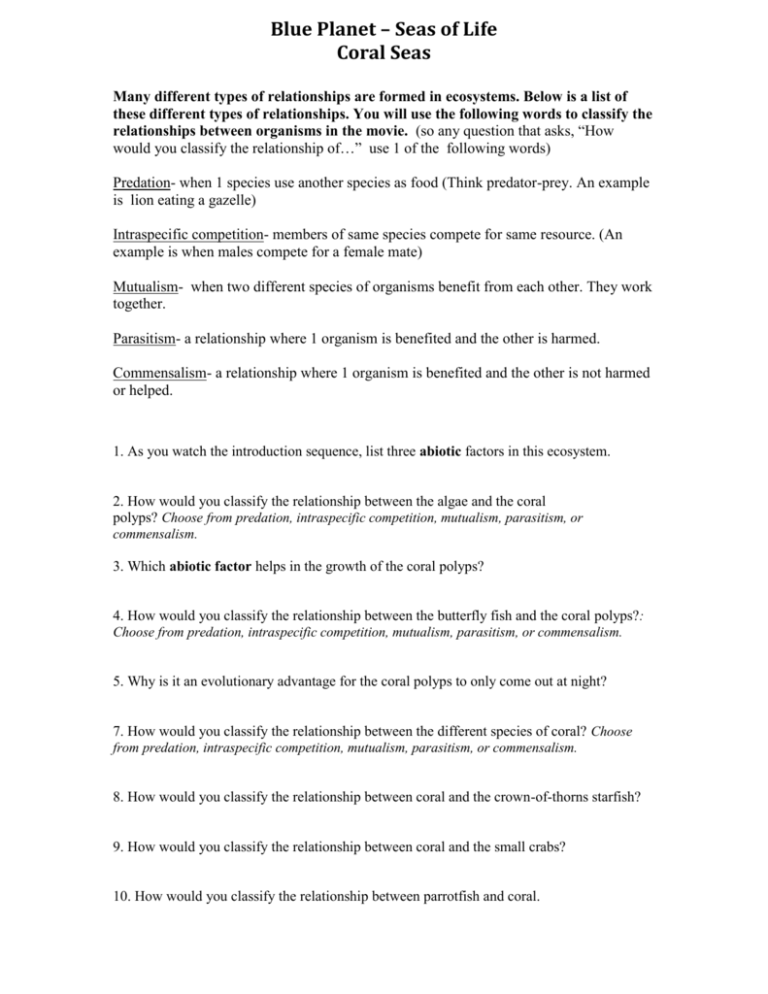
Blue Planet – Seas of Life Coral Seas Many different types of relationships are formed in ecosystems. Below is a list of these different types of relationships. You will use the following words to classify the relationships between organisms in the movie. (so any question that asks, “How would you classify the relationship of…” use 1 of the following words) Predation- when 1 species use another species as food (Think predator-prey. An example is lion eating a gazelle) Intraspecific competition- members of same species compete for same resource. (An example is when males compete for a female mate) Mutualism- when two different species of organisms benefit from each other. They work together. Parasitism- a relationship where 1 organism is benefited and the other is harmed. Commensalism- a relationship where 1 organism is benefited and the other is not harmed or helped. 1. As you watch the introduction sequence, list three abiotic factors in this ecosystem. 2. How would you classify the relationship between the algae and the coral polyps? Choose from predation, intraspecific competition, mutualism, parasitism, or commensalism. 3. Which abiotic factor helps in the growth of the coral polyps? 4. How would you classify the relationship between the butterfly fish and the coral polyps?: Choose from predation, intraspecific competition, mutualism, parasitism, or commensalism. 5. Why is it an evolutionary advantage for the coral polyps to only come out at night? 7. How would you classify the relationship between the different species of coral? Choose from predation, intraspecific competition, mutualism, parasitism, or commensalism. 8. How would you classify the relationship between coral and the crown-of-thorns starfish? 9. How would you classify the relationship between coral and the small crabs? 10. How would you classify the relationship between parrotfish and coral. 11. Jacks and silversides are a good example of an evolutionary arms race between predators and prey. Describe the predatory adaptations of the jacks, and the defensive adaptations of the silversides. a. Jacks – b. Silversides – 12. How would you classify the relationship between the sponge and the shrimp? Hint: The shrimp consume and live off the sponge. 13. How would you classify the relationship between the polychaete worm and the shrimp? 14. How would you classify the relationship between the redmouth grouper and lionfish? 15. How would you classify the relationship between the powder blue tangs and the convict tangs? 16. How would you classify the relationship amongst the white-tip shark individuals? 17. The entire group of white-tip sharks engaging in a feeding frenzy would be a _________. a. Organism b. Community c. Population d. Ecosystem 18. The white-tip sharks, marbled rays, octopus, lobster, eel, basket star, and all the other fish present in the coral reef during the night would be considered a… a. Organism b. Community c. Population d. Ecosystem 19. Watch the brown sturgeonfish mating ritual. Which males are most likely to pass their traits on to the next generation? How will this affect future populations? 20. The banded pipefish shown practice monogamy. How does their sexual behavior provide them an advantage? 21. Compare the appearance of the male and female cuttlefish. Why do the male and females look so different, even though they are the same species?
